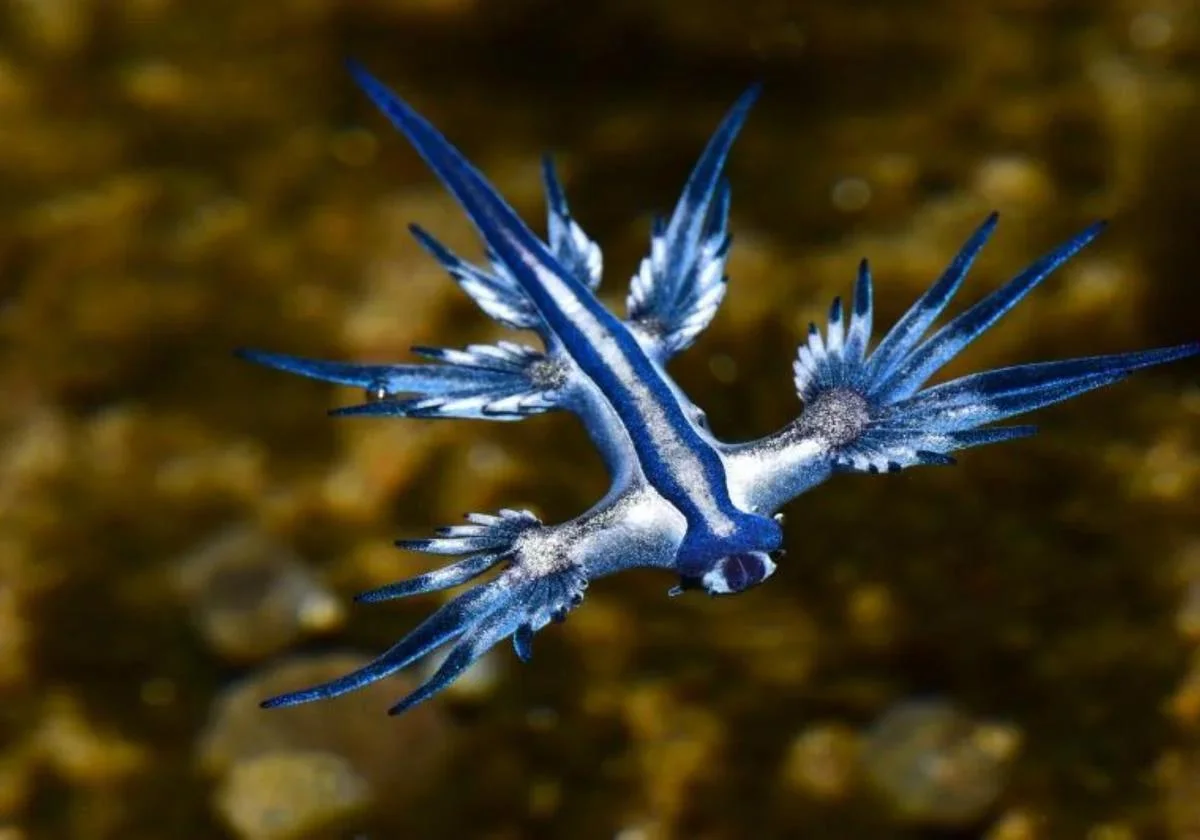Could blue dragons return to the coastline of mainland Spain and how bad is their sting?
Swimming has recently been banned on a beach in the Canary Islands because of their presence and there is a possibility that this August they could reach the shores of the Andalucía region
Alberto Flores
Granada
Monday, 4 August 2025, 13:49
They are small and, above all, very striking because of their intense blue colour. And if touched, they produce a stinging effect similar to that of jellyfish. The blue glaucus, which is also called the blue dragon, sea swallow, or blue angel is a gastropod that was spotted off the Spanish coast in 2021 in Alicante and in 2025 it has been detected again, this time on a beach in Lanzarote.
In fact swimming has been prohibited at the Lanzarote beach due to the risks of their sting which can be quite painful. And after being detected in the Canary Islands, some experts point to the possibility that they could reach the south of the Iberian Peninsula on their way to feed on their favourite prey, the Portuguese caravel (Physalia physalis).
"It is a gastropod that does not have a shell and, consequently, has developed a series of defensive systems," Luis Sánchez Tocino, collaborating professor at the Zoology Department of the University of Granada (UGR), explained to SUR's sister newspaper IDEAL. As it does not have a "mechanical" defence system, this animal uses a "chemical defence" to protect itself from predators.
"Its defence system is based on the stinging cells of the animals it feeds on".
"Its defence system is based on the stinging cells of the animals it feeds on," said Sánchez. In other words, it stores the stinging cells of the jellyfish it eats in its defence system, accumulates them in its digestive system and uses them when it needs to defend itself. Although its favourite food is the Portuguese dogfish, it also feeds on the blue button jellyfish (Porpita porpita) and the sea sail (Velella velella).
What the blue dragon looks like
As the UGR professor explains, this animal is between two and three centimetres in size, has a "very flat" body and its striking blue colour has an explanation: to go unnoticed by its predators. "From the air, because of its colour, it blends in with the sea. From below, it is silvery, so it is difficult to distinguish it from the sun's rays," he explains
Sánchez says that the Blue Dragon can usually be found "just below the surface" of the sea, as that is "where its prey is". After its detection in Alicante in 2021 and now in Lanzarote, it could now reach Andalucía thanks to sea currents, which drag and move both the blue dragon and its prey. "A few years ago many Portuguese man o' war appeared and it is most likely that they were accompanied by blue dragons," he says.
Is its sting dangerous?
Touching a blue dragon can cause symptoms similar to those of jellyfish stings. The symptoms usually range from pain, dermatitis and blisters, to nausea and vomiting. For this reason, Sánchez warns that it is important to "avoid them and not to bother them", like any other wild animal.
Their sting isn't very serious, although it can be dangerous for people with sensitive skin or allergies or if the sting occurs on the eyes or other mucous membranes. "There has been some unfounded scaremongering about the blue dragon, branding it as a deadly animal. However, there are others, such as the Portuguese carabela (man o' war), which are more dangerous," he concluded.

Comentar es una ventaja exclusiva para registrados
¿Ya eres registrado?
Inicia sesiónNecesitas ser suscriptor para poder responder.
Necesitas ser suscriptor para poder votar.